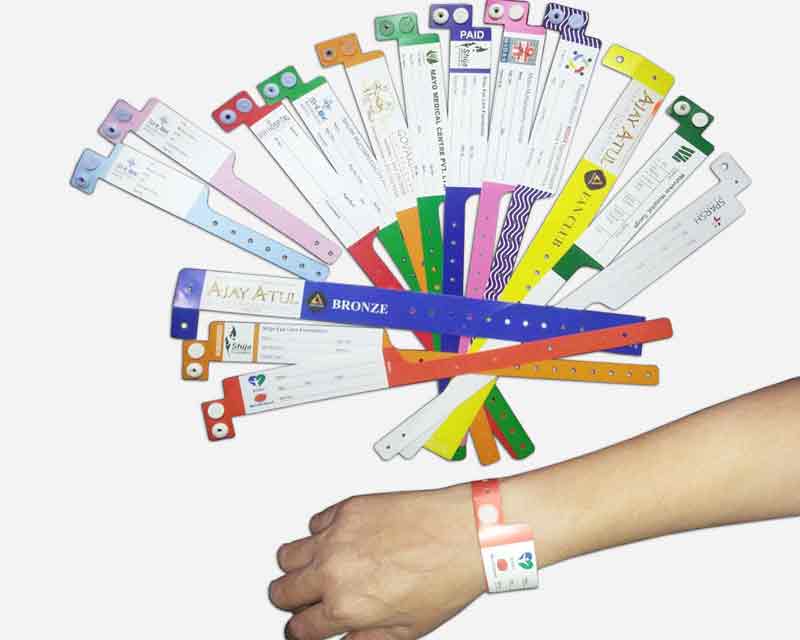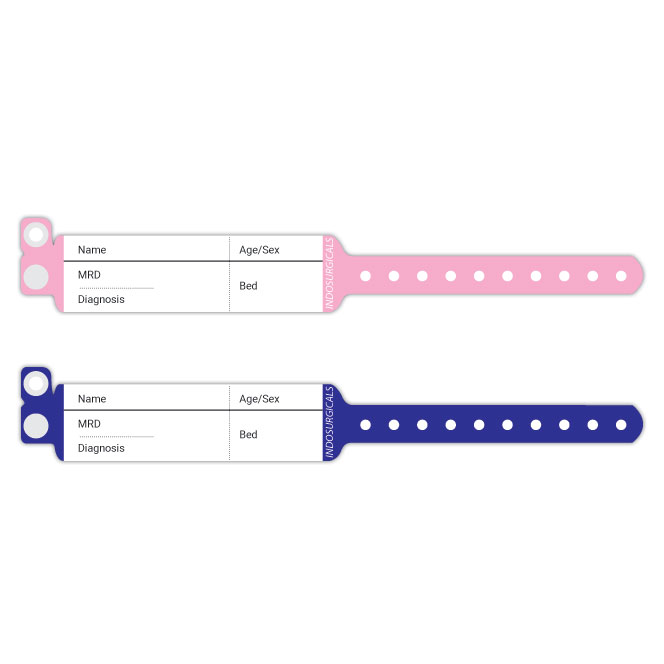The Connection Between a Patient Identification Band and Enhanced Patient Confidentiality
The Connection Between a Patient Identification Band and Enhanced Patient Confidentiality
Blog Article
Checking Out the Various Kinds Of Patient Identification Band Utilized in Medical Facilities
In the complex world of medical care, the vital role of Patient Identification bands frequently goes undetected. These bands, differing from easy paper wristbands to innovative RFID bands, develop the foundation of Patient safety and security methods, making sure precision in Patient Identification.
Understanding the Relevance of Patient Identification Bands
While they might appear like plain accessories, Patient Identification bands play an important function in medical facilities. These bands function as a critical device for verifying Patient identity, protecting against clinical mistakes associated with misidentification. The bands usually show essential info such as the Patient's name, age, blood kind, and any well-known allergies. They enable medical care experts to quickly access this essential details, therefore promoting accurate and prompt medical therapy. Patient Identification bands also aid in improving administrative tasks, making sure precise record-keeping and invoicing. In spite of their simpleness, these bands personify the concept of Patient safety and security, a keystone of quality healthcare. Without them, the threat of clinical mistakes, and subsequently, Patient injury, could considerably enhance.
Standard Paper Wristbands: Their Usage and Limitations
Traditional paper wristbands have actually been a staple in Patient Identification throughout different medical centers. While their usage prevails, they nurture particular restrictions that may influence their efficiency in Patient management. This area will certainly concentrate on the scope of their application and the integral disadvantages associated with their usage.
Paper Wristbands: Usage Extent
In the realm of Patient Identification, paper wristbands have long held an essential duty. These bands are usually utilized in outpatient setups, where the Patient's keep is short-lived. The wristbands consist of vital details such as the Patient's name, date of birth, and an one-of-a-kind Identification number. This straightforward, yet efficient system, permits physician to rapidly and properly identify individuals, ensuring the right therapy is provided. Paper wristbands are additionally used in emergency scenarios, where rapid Identification is extremely important. Their use encompasses occasions like blood donation drives and mass vaccination programs, better emphasizing their adaptability. Regardless of developments in modern technology, the humble paper wristband stays a trusted and affordable option for Patient Identification in various healthcare situations.
Limitations of Paper Wristbands
Despite their widespread usage, paper wristbands are not without their drawbacks. Their physical sturdiness is among the considerable restrictions. Exposure to water, sweat, or harsh handling can provide them unreadable and even create them to break down. Furthermore, paper wristbands commonly lack the technological capabilities of even more modern-day options, such as barcoding or RFID chips, limiting their functionality to merely presenting created info. The failure to upgrade or change the data on the wristband is another drawback. If the information is transcribed, clarity can be jeopardized, leading to potential misidentification. Finally, paper wristbands can cause discomfort or skin irritation to some patients, specifically when put on for extensive periods.
Barcoded Wristbands: Developments in Patient Identification
While Patient Identification has actually long been an important aspect of health care, the advent of barcoded wristbands symbolizes a significant leap onward. These bands leverage the simplicity of barcoding modern technology, enabling Patient details to be quickly scanned and accessed. They improve the rate and accuracy of Patient Identification, lowering the risk of clinical mistakes connected to misidentification. Barcoded wristbands are cost-efficient, easy to create, and remove handwriting mistakes usual with manual systems. They are not without constraints. While they offer improvements over conventional bands, the barcode can come to be used or smudged, providing it unreadable. Despite this, barcoded wristbands stay a necessary device in modern healthcare settings, representing the crossway of modern technology and Patient treatment.
Radio Regularity Identification (RFID) Bands: a Step In The Direction Of Futuristic Medical Care
The advancement of Patient Identification bands has brought about the appearance of Radio Regularity Identification (RFID) Bands (patient identification band). These ingenious gadgets present key advantages for healthcare centers, using an extra reliable and highly advanced means of Patient Identification. The execution of RFID in medical care is a significant step towards a much more advanced strategy to Patient management and safety and security
Recognizing RFID Bands

RFID Bands: Secret Advantages
Accepting a future straight from the source where technology and healthcare merge, radio regularity Identification bands use a number of crucial advantages. Mostly, these bands boost Patient safety by supplying precise, instant Identification, therefore minimizing clinical mistakes. RFID bands can save a substantial quantity of Patient information, consisting of case history and allergic reactions, allowing customized care. They additionally streamline management tasks, as the automated information entry changes hands-on processes, improving efficiency and reducing documents. RFID bands offer real-time monitoring of people, critical in high-risk environments such as surgery or extensive care. Last but not least, these bands are long lasting and resistant to environmental aspects, making sure constant capability. Overall, RFID bands represent a considerable innovation in Patient Identification technology, benefiting both clients and doctor.
Applying RFID in Health Care
As we tip into a technologically sophisticated period, the application of RFID bands in healthcare comes to be increasingly vital. These bands provide a seamless method to track and recognize patients, ensuring their safety and security and enhancing performance in treatment procedures. RFID bands provide numerous advantages over standard Identification approaches. They can keep a large amount of data, including the Patient's case history and treatment strategies, which can be quickly accessed by medical care companies. This information helps physicians make notified choices relating to the Patient's treatment strategy. RFID bands decrease medical mistakes by giving exact Patient Identification, which is vital in stopping misdiagnosis or incorrect medicine management. Hence, the implementation of RFID bands is a considerable action in the direction of enhancing Patient safety and medical care delivery.

Color-Coded Wristbands: Assisting in Quick and Accurate Diagnosis
In the dynamic atmosphere of a medical facility, color-coded wristbands have become crucial devices for swift and specific Identification of a person's medical problem. These wristbands, worn by patients, carry specific colors that match to various medical conditions or conditions. For instance, red can show allergy risks, while yellow may symbolize a fall danger. This system is made to offer instant aesthetic signs to doctor, enhancing Patient safety and care top quality. In emergency scenarios, the usage he has a good point of these wristbands enables for quick decision-making. The effectiveness of color-coded wristbands depends on the uniformity of color analysis across healthcare institutions, calling for usual standards for consistent application.
Methods for Effective Execution and Management of Patient ID Bands
Attaining ideal use of Patient Identification bands necessitates a well-structured method for their implementation and monitoring. Patient education is additionally vital; clients must comprehend the purpose of the bands and the demand for their continuous wear. It's important to have a back-up plan in area, such as barcode scanning or biometrics, to make sure that Patient Identification is never ever jeopardized.
Verdict
Patient Identification bands are crucial in clinical centers to make sure safety and precision. Typical paper, barcoded, RFID, and color-coded wristbands each hold distinct benefits, ranging from cost-effectiveness to innovative information storage and instantaneous medical informs. Effective execution and management of these bands can significantly decrease clinical errors, improve efficiency, and enhance total Patient treatment. Thus, understanding and making use of these Identification tools is paramount for preserving high criteria in health care.
These bands, differing from basic paper wristbands to innovative RFID bands, create the foundation of Patient safety and security methods, ensuring precision in Patient Identification.The evolution of Patient Identification bands has brought about the development of Radio Frequency Identification (RFID) Bands. In general, RFID bands represent a considerable development in Patient Identification technology, benefiting both clients and health care carriers.
RFID bands lower clinical mistakes by giving exact Patient Identification, which is essential in preventing misdiagnosis or wrong medicine management. Patient education is also critical; people have to recognize the function of the bands and the requirement for their constant wear.
Report this page